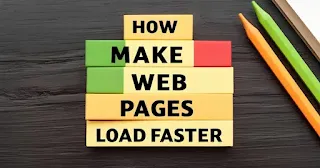Why Page Speed Matters
Page speed impacts both user experience and search rankings.
Slow-loading sites lead to higher bounce rates and lower conversions.
Google includes page speed as a ranking factor, especially on mobile.
A delay of just one second can reduce conversions by up to 7%.
Faster websites retain visitors longer, improve engagement, and lead to more interactions.
Speed is essential not just for performance but for business success.
A faster site also consumes fewer server resources and scales better under traffic spikes.
Investing in speed optimization can dramatically increase ROI on all digital efforts.
Use a Fast and Reliable Hosting Provider
Your hosting provider is the foundation of website performance.
Shared hosting may be affordable but often sacrifices speed for cost.
Consider switching to VPS or cloud-based hosting with optimized infrastructure.
Look for providers offering solid-state drives (SSD), built-in caching, and scalable resources.
Data center location matters too—choose one close to your audience for faster delivery.
Ensure your host has uptime guarantees and low server response times.
Upgrading your hosting is often the most impactful step to speed improvement.
Optimize Images Without Losing Quality
Images account for a large portion of page weight.
Use image compression tools to reduce file sizes without noticeable loss of quality.
Aim for under 100KB per image when possible.
Convert to modern formats like WebP, which are lighter and load faster.
Avoid using full-resolution photos where thumbnails are sufficient.
Use lazy loading to delay image rendering until users scroll to them.
Combine CSS sprites where appropriate to reduce HTTP requests.
Best Image Formats to Use
- WebP: Best balance of quality and file size
- JPEG: Good for photos, supports high compression
- PNG: Ideal for transparent or flat-color images
- SVG: Scalable and perfect for logos or icons
Minify CSS, JavaScript, and HTML
Minification removes unnecessary characters from code—spaces, comments, line breaks.
This reduces file sizes and speeds up page rendering.
Combine multiple CSS or JS files into one to cut down on HTTP requests.
Use asynchronous loading for non-essential scripts to prevent render-blocking.
Avoid inline CSS or large JavaScript blocks in the header.
Always test after minification to ensure functionality isn’t broken.
Tools for Minification
- UglifyJS (JavaScript)
- CSSNano (CSS)
- HTMLMinifier (HTML)
- Autoptimize (WordPress plugin)
Leverage Browser Caching
Caching stores static resources in users' browsers, so they don’t reload each visit.
Set expiry headers for images, CSS, and JavaScript files to a longer duration.
This drastically cuts down on loading time for returning visitors.
Implement cache-control policies in your .htaccess or server config files.
Use WordPress caching plugins like W3 Total Cache or WP Rocket for automated setup.
Enable GZIP Compression
GZIP reduces the size of transferred files by up to 70%.
It works by compressing files before sending them to the browser.
Check if your server has GZIP enabled. You can use tools like GTMetrix or Check GZIP Compression.
If not enabled, you can activate it via .htaccess on Apache or NGINX config for NGINX servers.
Reduce HTTP Requests
Each asset on a page—scripts, stylesheets, images—requires a separate request.
Fewer requests = faster page loads.
Combine CSS files, reduce plugins, and inline small scripts.
Use icon fonts or SVGs instead of multiple image icons.
Avoid unnecessary third-party scripts.
Clean out unused CSS and JavaScript libraries.
Use a Content Delivery Network (CDN)
CDNs distribute your content across global servers.
When a user visits, they’re served data from the nearest location.
This reduces latency, improves load times, and handles high traffic better.
Most CDNs also provide DDoS protection and uptime monitoring.
Popular CDN services include Cloudflare, BunnyCDN, and Amazon CloudFront.
Recommended CDNs
- Cloudflare: Free plan with caching and security
- KeyCDN: Easy to set up, pay-as-you-go
- BunnyCDN: Affordable and fast
- StackPath: Designed for developers and enterprise use
Optimize for Mobile Devices
Mobile-first indexing means Google primarily looks at your mobile site.
Use responsive design to adapt to different screen sizes.
Minimize pop-ups and heavy scripts that slow mobile performance.
Enable AMP (Accelerated Mobile Pages) for content-driven websites.
Compress images and reduce DOM complexity for faster render times.
Test and Monitor Your Website Speed
Regular speed testing identifies bottlenecks and tracks progress.
Use tools like Google PageSpeed Insights, GTMetrix, and Pingdom.
Set benchmarks and monitor improvements over time.
Pay attention to Core Web Vitals: LCP, FID, and CLS.
Make speed audits part of your monthly maintenance routine.
Fix problems as they arise to maintain fast performance.
Top Speed Testing Tools
- Google PageSpeed Insights: Free and reliable
- GTMetrix: Provides waterfall analysis
- Pingdom: Great for global performance testing
- WebPageTest: Advanced options and scripting support
Final Thoughts
Speed optimization is not a one-time task—it’s an ongoing process.
Faster websites not only improve user experience but also boost search visibility.
Every second counts.
Implementing even a few of these strategies can significantly improve load times.
Stay consistent, monitor results, and evolve with best practices.
 Reviewed by Free Cash Click
on
April 23, 2025
Rating:
Reviewed by Free Cash Click
on
April 23, 2025
Rating:

No comments: